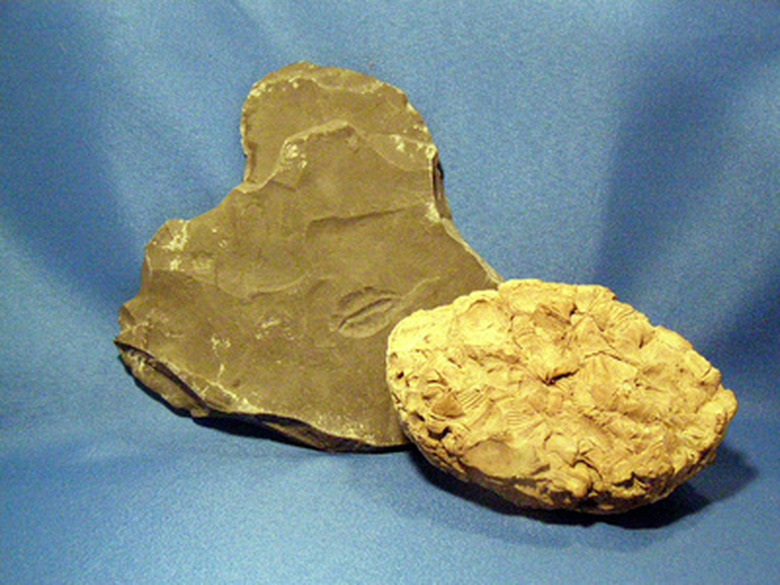How Are Fossils Used In Science?
Fossils are the traces of an extinct animal or plant which have been preserved on materials such as rocks. Fossilization tends to favor hard body parts such as bones, shell or teeth, and also plant leaves. The branch of science that is devoted to the understanding of prehistoric life through the study of fossils is called paleontology.
Fossil Discoveries
Fossil Discoveries
The Arlington Archosaur Site, in northern Texas, is one of the important fossil sites. Paleontologists found a crocodile's skull there in disassembled condition. The remnant has survived over 100 million years. This prolific fossil site has also preserved a variety of other animal species, including dinosaurs. A skeleton of a large herbivorous "duck billed" dinosaur was recovered from the northern hillside at the prolific North Texas fossil area.
The Path of Evolution
The Path of Evolution
Ediacaran fossils (approximately 630 to 540 millions years old) and Cambrian fossils (540 million years old) have led many scientists along the evolutionary path, particularly during a critical phase of the history of animal life, which is known as the Great Cambrian explosion. It is a pivotal time of the Earth's history, when the first evolutionary radiation of animals reached its apex.
History of Animal and Plant Life
History of Animal and Plant Life
Fossils help paleontologists to reconstruct the evolutionary pathway of animal and plant groups. They help in identifying the morphological changes within an animal or plant species. Thus, the historical development of a biological group (as a race or species) can be studied. For example, a close relationship between birds and reptiles was first proposed when a fossil called Archaeopteryx was excavated. It is essentially a missing link between reptiles and birds.
Histological Events
Histological Events
Fossils have been used by scientists to determine the dates of rock layers (or strata) that were laid down in succession hundreds of years ago. However, the accuracy and precision of this method depend on several conditions, such as depth, lithology, thickness and abundance of the fossils in that rock. Thus, fossils are the key indicators of the relative age of rocks. They can also be closely tied to histological events.
Earth’s Climate
Earth's Climate
In paleontology, one can often determine the type of environment that a fossil organism lived in. Thus, fossils can provide evidence of the earth's climate at the time of its preservation.
References
Cite This Article
MLA
Charmaine, Mike. "How Are Fossils Used In Science?" sciencing.com, https://www.sciencing.com/fossils-used-science-6364060/. 24 April 2017.
APA
Charmaine, Mike. (2017, April 24). How Are Fossils Used In Science?. sciencing.com. Retrieved from https://www.sciencing.com/fossils-used-science-6364060/
Chicago
Charmaine, Mike. How Are Fossils Used In Science? last modified August 30, 2022. https://www.sciencing.com/fossils-used-science-6364060/
